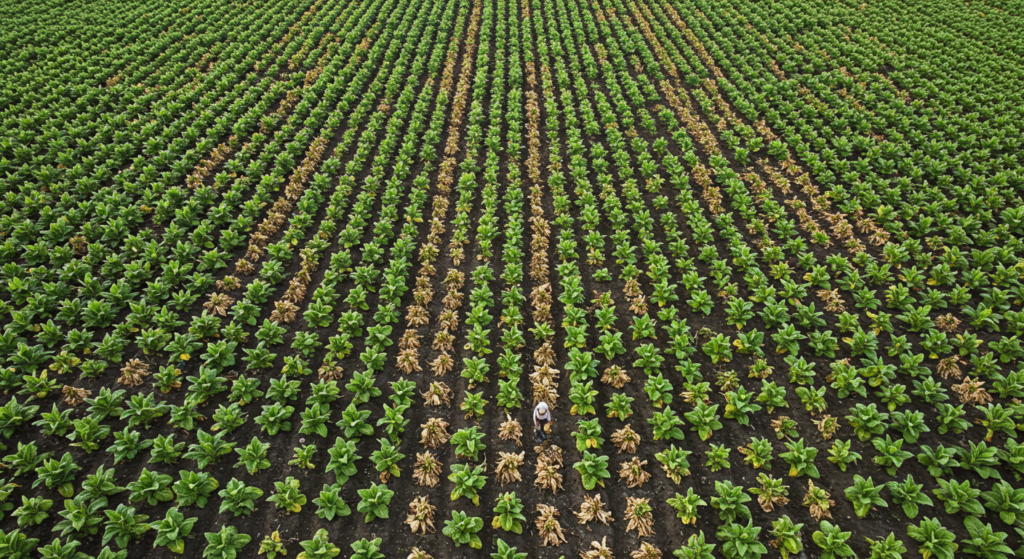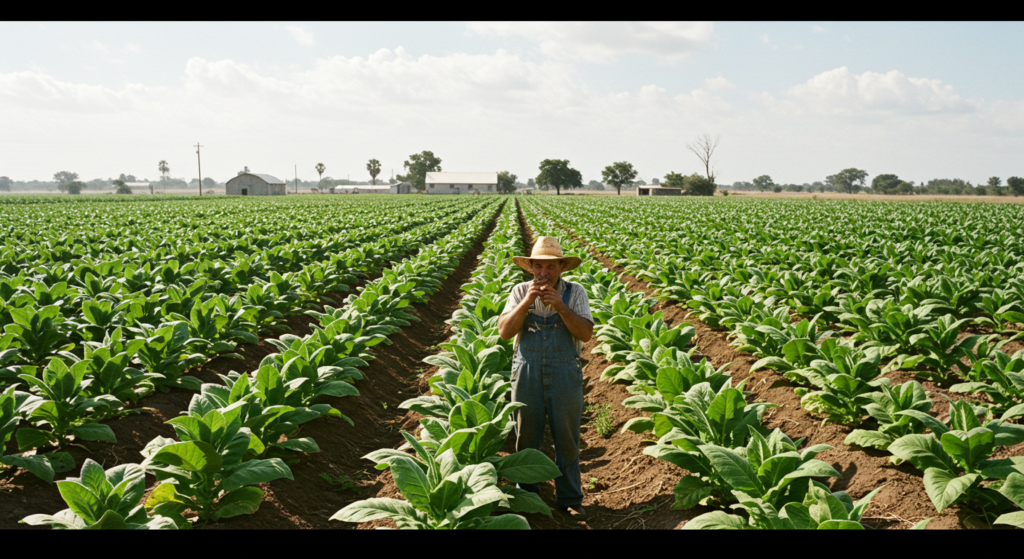The history of tobacco reveals a fascinating journey that has profoundly shaped cultures around the globe. From its sacred use among indigenous peoples in the Americas to its introduction in Europe by explorers in the 16th century, tobacco’s significance has evolved dramatically. Initially revered for its medicinal and ceremonial roles, tobacco soon transitioned into a mass-produced commodity, leading to the establishment of plantations and a surge in cigarette production by the 19th century. This transformation not only made tobacco widely accessible but also set the stage for the complex relationship we have with it today.
However, the 20th century ushered in a new era of awareness regarding the health risks associated with tobacco use. As society began to recognize the dangers of smoking, public health campaigns emerged, advocating for cessation and promoting products like nicotine patches. The history of tobacco is not just about its consumption; it encompasses the development of various forms, including pipe tobacco and smokeless alternatives, each carrying its own cultural weight and health implications.
As we explore tobacco’s diverse world, we’ll examine forms like hookah and chewing tobacco, and public health debates about them. We’ll also consider smoking bans, rising cigarette prices, and how cessation aids support those trying to quit smoking.
By understanding tobacco’s history and current trends, we can better appreciate its complex and evolving role in society today.
Discover the Untold History of Tobacco and Its Transformative Role in Cultures Worldwide
Imagine a time when tobacco was revered as a sacred gift from the earth, rather than just a product on a store shelf. Such a transformation reflects broader societal changes and the impact of globalization on cultural practices. Today, it plays a significant role in various cultural practices around the world.
Tobacco’s roots can be found in the ancient practices of indigenous civilizations across the Americas. Indigenous peoples cultivated tobacco for thousands of years, using it in religious ceremonies and as a medicinal plant. They employed various methods of consumption, including smoking, chewing, and snuffing. When European explorers, such as Christopher Columbus, encountered tobacco in the 16th century, they noted its importance among Native Americans. Initially, tobacco fascinated Europeans as a luxury item, but its appeal quickly spread across the continent.
With tobacco gaining popularity, it led to the establishment of plantations in the Americas. These plantations fueled the demand for tobacco products, making them widely accessible. Therefore, the 19th century saw a surge in cigarette production, which further entrenched tobacco in society. This realization marked a turning point in public health discourse, leading to increased advocacy for smoking cessation and regulation. Awareness of health risks associated with smoking, including secondhand smoke, prompted many to seek alternatives. In recent years, a growing movement towards quitting smoking has emerged, with products like nicotine patches and e-cigarettes introduced to assist users in transitioning away from traditional tobacco products.
In modern times, various forms of tobacco consumption exist, including hookah, chewing tobacco, and pipe tobacco. As society continues to navigate the complexities of tobacco use, smoking bans and regulations aim to protect public health. Understanding the history of tobacco helps contextualize its role in contemporary culture.
Will the Smoking Ban Save Lives or Spark Outrage in Society
In the bustling streets of the 19th century, tobacco transformed from a luxury to a common commodity. This shift made smoking accessible to everyone, changing social habits forever. Yet, the consequences of this accessibility soon became evident.
The rise of cigarette production in the 19th century transformed tobacco consumption, making it more accessible to the masses. As factories churned out cigarettes, they flooded the market, leading to a surge in popularity. People began to smoke not just for pleasure but also as a social activity, often gathering in public spaces to enjoy their cigarettes. As the smoke filled the air, so did the realization that this pleasure came with a price.
Public health campaigns emerged, highlighting the dangers of smoking and the effects of secondhand smoke. Indeed, the health risks associated with tobacco use became apparent in the 20th century, leading to public health campaigns against smoking and the introduction of smoking bans in many places. These campaigns aimed to educate the public about the severe health implications of tobacco use, including cancer and respiratory diseases.
In addition to cigarettes, other forms of tobacco consumption, such as hookah and smokeless tobacco, also faced scrutiny. Now that society continues to navigate these complexities, understanding the history of tobacco helps contextualize its role in contemporary culture. This understanding is essential for addressing the ongoing challenges posed by tobacco use and regulation. In any event, the introduction of the Smoking Ban has sparked debates about personal freedom versus public health, raising questions about its effectiveness in saving lives or inciting outrage among smokers. As long as these discussions continue, the impact of tobacco on society remains a critical issue.
How Tobacco Products Shaped Cultures and Lives Forever
The evolution of tobacco products over time reflects significant shifts in cultural practices. This evolution reflects changing cultural practices and health awareness. Today, various forms of tobacco consumption exist, each with unique implications.
Tobacco’s narrative includes the emergence of various consumption methods and products. For instance, pipe tobacco often symbolizes relaxation and contemplation, while chewing tobacco has deep roots in certain communities. Indeed, smokeless tobacco has also carved out its niche, appealing to those who prefer an alternative to traditional smoking.
Recognizing the historical context of tobacco use is essential as society addresses its complexities. The evolution of tobacco products illustrates changing attitudes and health considerations. In recent years, there has been a growing movement towards quitting smoking, with products like nicotine patches and e-cigarettes being introduced to help users transition away from traditional tobacco products. At any case, these innovations reflect a significant shift in public health strategies aimed at reducing tobacco-related harm.
In addition, the debate surrounding smoking bans continues to spark discussions about public health and personal freedom. Will the smoking ban save lives or spark outrage in society? As long as tobacco products remain prevalent, the conversation will persist, highlighting the need for balance between individual choice and community health. With the result that, understanding the multifaceted history of tobacco can inform future policies and personal choices alike, ensuring that the legacy of tobacco is approached with both caution and respect.

History of Tobacco Reveals the Fascinating Journey of Hookah Through Time
The hookah experience captivates users with its rich flavors. Typically, flavored tobacco blends with molasses and fruit create a distinct taste that sets hookah apart from traditional cigarette smoking. This unique combination invites exploration of new tastes and aromas. At Aria Lounge, patrons can enjoy a diverse selection of hookah flavors, enhancing their social interactions. The lounge’s inviting environment encourages relaxation and enjoyment among friends and new acquaintances.
As friends gather around, laughter and camaraderie ignite new conversations. This communal activity contrasts with the solitary nature of cigarette smoking, making hookah a staple in social settings and providing a unique way to unwind.
While hookah smoking is steeped in cultural significance, it also raises important health considerations. Many perceive it as a safer alternative, yet it still exposes users to harmful substances. It’s essential to recognize that, despite its inviting nature, there are serious health implications that must be understood to make informed choices about tobacco use.
Is hookah smoking truly a safer alternative to cigarettes, or does it carry hidden health risks? Despite its social appeal, hookah smoking carries significant health risks akin to those of menthol cigarettes and other tobacco products. Users expose themselves to harmful substances and secondhand smoke, which can adversely affect non-smokers nearby. In fact, research indicates that hookah smoke contains many of the same harmful substances found in cigarette smoke, highlighting the need for awareness. To that end, Aria Lounge emphasizes a responsible smoking environment, encouraging patrons to enjoy their hookah while remaining aware of the health implications.
Hookah serves as a social glue, binding friends together over shared experiences and flavors. Nevertheless, the allure of hookah should not overshadow the potential health risks involved. By and large, understanding these risks is essential for making informed choices about tobacco use.
As discussions about tobacco use continue, it becomes essential to consider the broader context of smoking bans and public health initiatives that aim to protect individuals from the harmful effects of tobacco, including both smoking and secondhand smoke exposure. While enjoying the moment, let’s not forget that knowledge is power when it comes to our health. In light of these complexities, understanding the history of tobacco helps contextualize its role in contemporary culture. The allure of hookah is undeniable, but it’s crucial to balance enjoyment with awareness. Ultimately, the journey of tobacco consumption reflects changing attitudes and health considerations that shape our understanding of hookah and its place in modern society. In a world where smoking bans are becoming the norm, the history of tobacco reminds us of the delicate balance between enjoyment and health.
Is Hookah really a safer choice or a deadly illusion
Is hookah smoking truly a safer alternative to cigarettes, or does it carry hidden health risks? Despite its social appeal, it is crucial to recognize that hookah smoking carries significant health risks akin to those of menthol cigarettes and other tobacco products. Users not only expose themselves to harmful substances but also to secondhand smoke, which can adversely affect non-smokers nearby. In fact, research indicates that hookah smoke contains many of the same harmful substances found in cigarette smoke, highlighting the need for awareness. To that end, Aria Lounge emphasizes a responsible smoking environment, encouraging patrons to enjoy their hookah while remaining aware of the health implications.
Think of hookah as a social glue, binding friends together over shared experiences and flavors. Nevertheless, the allure of hookah should not overshadow the potential health risks involved. By and large, understanding these risks is essential for making informed choices about tobacco use.
As discussions about tobacco use continue, it becomes essential to consider the broader context of smoking bans and public health initiatives that aim to protect individuals from the harmful effects of tobacco, including both smoking and secondhand smoke exposure. Right now, let’s not forget that knowledge is power when it comes to our health. As society continues to navigate these complexities, understanding the history of tobacco helps contextualize its role in contemporary culture. The allure of hookah is undeniable, but it’s crucial to balance enjoyment with awareness. Ultimately, the journey of tobacco consumption reflects changing attitudes and health considerations that shape our understanding of hookah and its place in modern society. In a world where smoking bans are becoming the norm, the history of tobacco reminds us of the delicate balance between enjoyment and health.

Discover the History of Tobacco and Its Enduring Influence on Society
Did you know that tobacco has been a part of human culture for centuries, serving not only as a recreational substance but also as a spiritual tool? This captivating journey from ancient rituals to modern social gatherings invites us to reflect on our own experiences with tobacco. For many, places like Aria Lounge are not just venues; they are spaces where friendships are forged over shared moments, often accompanied by the aromatic clouds of flavored tobacco.
Tobacco originated with indigenous peoples in the Americas, who valued it for its medicinal and spiritual significance. By the 16th century, it had reached Europe and gained popularity, leading to mass cigarette production in the 1800s. The 20th century revealed serious health risks from smoking, sparking public health campaigns and widespread bans. This shift led to the rise of alternatives like smokeless tobacco and nicotine patches for those seeking healthier lifestyles.
At the heart of this conversation lies hookah, a traditional Middle Eastern waterpipe that many enjoy as a social activity. At Aria Lounge, patrons often gather to share this experience, viewing it as a more communal and perhaps safer alternative to cigarettes. Yet, it’s essential to recognize that hookah smoking is not without its risks, similar to those posed by menthol cigarettes and other tobacco products. As we navigate the complexities of tobacco use in our lives, venues like Aria Lounge not only celebrate cultural connections but also remind us of the importance of being aware of tobacco’s history and its health implications.
Ultimately, the story of tobacco is not just about its past; it’s about how it continues to shape our social interactions today. Whether you’re enjoying a hookah with friends or reflecting on the broader implications of tobacco use, it’s clear that this age-old plant has a lasting impact on our society. Let’s continue to engage in these conversations, fostering awareness and understanding as we navigate our choices in a world where tobacco remains a significant part of our cultural fabric.
Listen to an AI-Generated Podcast of this Blog
Uncovering the Surprising Legacy of Tobacco Through Time
Here’s a fascinating random fact about tobacco. Tobacco has a rich history that spans centuries. Indigenous peoples revered tobacco for its spiritual and medicinal properties. They used it in various forms, such as smoking and chewing tobacco. When Europeans encountered tobacco, they quickly embraced it. By the 19th century, cigarette production surged, making tobacco widely accessible. As a result, smoking became a social activity, often enjoyed in public spaces. However, health risks associated with tobacco use became apparent over time. Public health campaigns emerged, advocating for smoking cessation and the use of nicotine patches. Additionally, smoking bans aimed to reduce secondhand smoke exposure. Despite its social appeal, tobacco remains a complex issue in society today. Overall, understanding tobacco’s history helps contextualize its role in modern culture.
FAQs
What does the history of tobacco reveal about its cultural significance?
The history of tobacco shows its sacred use among indigenous peoples and its evolution into a mass-produced commodity.
How did tobacco transition from a luxury item to a common product?
Tobacco became widely accessible due to the establishment of plantations and increased cigarette production in the 19th century.
What health risks are associated with smoking tobacco?
Smoking tobacco can lead to serious health issues, including cancer and respiratory diseases, as public health campaigns highlight.
How does hookah smoking compare to traditional cigarette smoking?
Hookah smoking is often perceived as a safer alternative, but it carries significant health risks similar to menthol cigarettes.
What role do smoking bans play in public health?
Smoking bans aim to protect public health by reducing exposure to secondhand smoke and encouraging cessation of tobacco use.
Can you explain the appeal of hookah in social settings?
Hookah serves as a social glue, enhancing interactions among friends and creating a communal experience different from cigarette smoking.
What alternatives exist for those looking to quit smoking?
Alternatives like nicotine patches and e-cigarettes help users transition away from traditional tobacco products and quit smoking.
How does chewing tobacco fit into the history of tobacco?
Chewing tobacco has deep roots in certain communities, reflecting the diverse methods of tobacco consumption throughout history.
What are the implications of rising cigarette prices?
Rising cigarette prices can deter smoking, contributing to public health efforts aimed at reducing tobacco consumption overall.
Why is it important to understand the history of tobacco?
Understanding the history of tobacco helps contextualize its role in contemporary culture and informs personal choices regarding tobacco use.
Come Visit Us
We have three fantastic locations we’d love to invite you to! If you’re in the Chicagoland area, you can come chill with us at either our Grayslake or Schaumburg locations. Alternatively, if you’re in Wisconsin, stop by and visit us at our Kenosha lounge. Please note that you must be 21+ to enter with a valid ID. We hope to see you soon!


